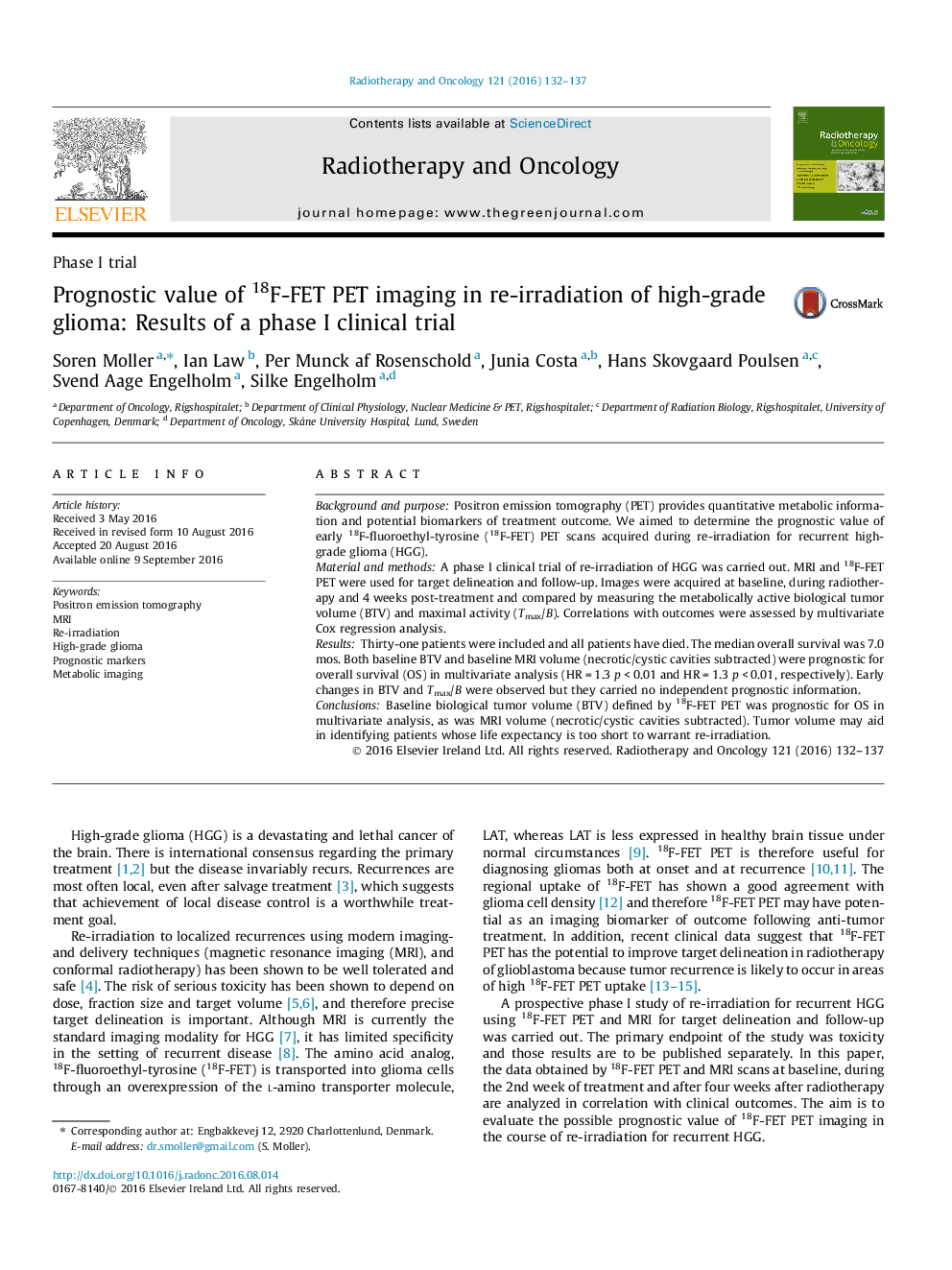| Article ID | Journal | Published Year | Pages | File Type |
|---|---|---|---|---|
| 5529807 | Radiotherapy and Oncology | 2016 | 6 Pages |
Background and purposePositron emission tomography (PET) provides quantitative metabolic information and potential biomarkers of treatment outcome. We aimed to determine the prognostic value of early 18F-fluoroethyl-tyrosine (18F-FET) PET scans acquired during re-irradiation for recurrent high-grade glioma (HGG).Material and methodsA phase I clinical trial of re-irradiation of HGG was carried out. MRI and 18F-FET PET were used for target delineation and follow-up. Images were acquired at baseline, during radiotherapy and 4 weeks post-treatment and compared by measuring the metabolically active biological tumor volume (BTV) and maximal activity (Tmax/B). Correlations with outcomes were assessed by multivariate Cox regression analysis.ResultsThirty-one patients were included and all patients have died. The median overall survival was 7.0 mos. Both baseline BTV and baseline MRI volume (necrotic/cystic cavities subtracted) were prognostic for overall survival (OS) in multivariate analysis (HR = 1.3 p < 0.01 and HR = 1.3 p < 0.01, respectively). Early changes in BTV and Tmax/B were observed but they carried no independent prognostic information.ConclusionsBaseline biological tumor volume (BTV) defined by 18F-FET PET was prognostic for OS in multivariate analysis, as was MRI volume (necrotic/cystic cavities subtracted). Tumor volume may aid in identifying patients whose life expectancy is too short to warrant re-irradiation.
